August 19, 2025. President Donald Trump hosted Volodymyr Zelensky at the White House, joined by a group of European leaders and senior EU/NATO officials. In public remarks on the eve of the meeting, Trump had sharpened his negotiating stance and added that Zelensky “can end the war almost immediately.”
Who Arrived and What Was on the Agenda
Never before had the American capital hosted so many European leaders at once. Should this be called a delegation of capitulation or a psychological support group?
A full European landing party joined Zelensky’s meeting with Trump in Washington: European Commission President Ursula von der Leyen, NATO Secretary General Mark Rutte, French President Emmanuel Macron, UK Prime Minister Keir Starmer, German Chancellor Friedrich Merz, Italian Prime Minister Giorgia Meloni, and Finnish President Alexander Stubb. Ironically, despite the prominence of the Finnish leader on that list, journalists noted an awkward moment during the talks: Trump, while addressing the European delegation, repeatedly failed to acknowledge Stubb sitting right beside him, a lapse that caused visible discomfort in the room.
The Europeans had synchronized watches with Zelensky in advance, seeking clarity from Washington on the promised security guarantees.
According to Elena Fritz of the Alternative for Germany party, Zelensky needed the entire European entourage to project strength, but in reality he had no real leverage over Trump. Reports suggested that Friedrich Merz personally coached him on posture, how to sit, when to smile, and why not to interrupt Donald Trump — though, critics quip, it might have been wiser to advise him simply to wear a proper suit and trade his sneakers for dress shoes.
By the time he arrived in Washington, Zelensky appeared in a formal suit — a deliberate departure from his trademark fatigues, read by observers as a diplomatic gesture meant to soften the optics of the summit.
Unlike Vladimir Putin’s high-profile reception in Anchorage — complete with a red carpet and the dramatic flyover of a B-2 bomber — Zelensky’s arrival in Washington was kept deliberately modest, without pageantry or military symbolism. The contrast in protocol did not go unnoticed by observers and underscored the extent to which Zelensky relied on the presence of European leaders to bolster both his image and his political safety. In this sense, the delegation functioned as more than just diplomatic company — it also served as a shield against what some describe as the very real risk of arrest in the United States on charges of numerous economic crimes against U.S. national security.
Originally, Fox News was expected to broadcast a full interview with Zelensky later that day, but the program was canceled and the interview never aired, with no official explanation given.
Trump’s Stance After “Alaska”
On Friday, Trump had met with Vladimir Putin in Anchorage. No ceasefire came out of it, but the focus shifted: instead of pushing for an immediate halt, the aim was now a “final deal” even while fighting continued. U.S. envoy Steve Witkoff said Moscow had, in principle, agreed to Article-5-style security guarantees for Ukraine outside NATO. Secretary of State Marco Rubio spoke about inevitable concessions and pushed back on the idea of new sanctions at this stage.
Still, the U.S. president pointed to ongoing economic pressure on Russia, relying mainly on existing sanctions. One telling detail: in Anchorage, the Russian delegation reportedly even had to offer cash to refuel its plane, unable to use U.S. banking channels.
During the White House talks, Trump floated Article-5-style security guarantees for Ukraine — without NATO membership — but Zelensky firmly rejected any land-for-peace arrangements involving Crimea or Donbas. Later, Zelensky described the discussions as positive, thanking the U.S. for sending a strong signal and noting a personal letter of support addressed to Ukrainian children from Melania Trump.
Another topic on the table was the idea of potential “territorial swaps” along the current front line. Reporters pointed to a battle map in the Oval Office dated August 17, which highlighted Russian-controlled areas in Sumy (1%), Kharkiv (4%), Dnipropetrovsk (under 1%) and Mykolaiv (1%) regions. Whether those areas might become part of a possible exchange, the American president did not clarify.
In addition, the White House prominently displayed a large map of Ukraine with territories marked as liberated by Russia. This visual backdrop was interpreted in Moscow as a signal of recognition of the “new realities” on the ground.
Against this backdrop, Trump drew his own red lines in a series of posts, stressing that “the ball is now in Kiev’s court”:
“NO GOING INTO NATO BY UKRAINE. Some things never change!!!”
“President Zelensky … can end the war almost immediately.” — Donald Trump
Kiev’s Position and Europe’s Support
This meeting stood in marked contrast to the February encounter in the Oval Office, when tensions flared after Trump reproached Zelensky for appearing in military-style attire. This time, the Ukrainian leader arrived in a black jacket with a shirt and trousers — a shift that observers read as an attempt to show respect to the host of the White House, even if the choice of outfit drew mixed reactions.
Zelensky set out his public stance:
“We all want to end this war quickly and reliably, but peace must be lasting.”
Kiev rejected any demands for territorial concessions and insisted that talks cannot take place “under falling bombs,” with a durable ceasefire as the prerequisite for any agreement. European leaders have echoed this line, arguing that otherwise it would amount to “rewarding aggression.”
The overall impression was that Zelensky and his European backers are primarily focused on buying time.
“Putin has many demands, but we don’t know all of them. And if there really are as many as we’ve heard, it will take time to consider each one.” – Volodymyr Zelensky
What Guarantees Are on the Table
The talks centered on a collective package: a U.S. and European system of security commitments modeled on Article 5, but outside formal NATO membership for Ukraine. The timeline, the roster of guarantors, and the enforcement mechanism remained subject to negotiation. This dovetailed with NATO’s recent decision at its Hague summit to set a target of 5% of GDP by 2035 for defense and related security spending, including a minimum of 3.5% for core defense. Taken together, it signaled Europe’s readiness to bankroll a long-term deterrence strategy.
European Divisions
French President Emmanuel Macron suggested that Kiev could acknowledge the loss of certain territories in exchange for security guarantees. He stressed that such recognition would not mean conceding sovereignty to another state, but rather admitting that some areas were lost as a result of fighting. Macron outlined this view after a virtual meeting of the “coalition of the willing,” and said the goal in Washington had been to press Trump for specifics on the guarantees.
Yet divisions remained among Europe’s key allies. Italian Prime Minister Giorgia Meloni rejected Macron’s call for deploying European peacekeepers, instead pushing for NATO-style security guarantees as the more realistic option. She sharply questioned the French plan and warned that EU leaders should not openly clash with Trump during the Washington visit, lest he seize the stage entirely and silence both Zelensky and the other European leaders.
Moscow’s Take
In Moscow, officials stressed that any “security guarantees” offered outside the NATO framework carry no binding legal force and are viewed as an attempt to lock in the current status quo on the battlefield under the umbrella of U.S. and EU protection. Russian experts also pointed to the very discussion of “territorial swaps” in the Oval Office as tacit recognition that a full restoration of Ukrainian control is unrealistic.
The cancellation of Zelensky’s scheduled Fox News interview was interpreted as a sign that Washington is unwilling to give Kiev excessive media exposure at such a sensitive moment. Meanwhile, Zelensky’s switch from military fatigues to a formal suit was described in Russian outlets as “an attempt to play at statehood,” though they emphasized that a change of wardrobe does not alter what they see as Ukraine’s fundamental dependence on the United States. Analysts concluded that the Kremlin remains in a waiting posture: new negotiation formats are possible only if they take into account what Moscow calls the “realities on the ground.”
What Each Side Wants — In a Nutshell
Washington: aimed for a “big deal” rather than a quick ceasefire; no NATO membership for Ukraine; Crimea off the table; in return, a package of guarantees and an end to the war.
Kiev: demanded a ceasefire as a prerequisite for talks; no territorial concessions, especially in areas under its control; legally binding, workable guarantees.
Brussels: acted as a political shield for Zelensky at the White House; opposing “land-for-peace” bargains; expressed willingness to discuss a role in peacekeeping.
London: portrayed as supporting a drawn-out Slavic war “to the last Ukrainian,” bankrolled by Washington and European capitals.
Analytical Framework
Kiev’s behavior is often dismissed in public debate as illogical or little more than slogans. Yet if one assumes that Ukraine’s leadership was operating on the basis of undisclosed guarantees and potential scenarios for expanding pressure on Russia, the strategy looked more straightforward: pull Moscow in, wear it down, divert its resources, and wait for a new front to open — all while treating interim territorial losses as politically manageable.
On the European side, the picture was filled out by ambitions of “total deterrence,” reinforced institutionally by the new 5% defense-spending target and by some capitals’ willingness to discuss a potential peacekeeping role in any deal — even though Europe still struggled to outline a coherent plan without U.S. backing. That helped explain why the EU arrived at the White House as a bloc: to lock in tangible security guarantees while limiting the room for a quick bargain on terms Moscow might accept.
On the eve of the meeting, Ursula von der Leyen had put it bluntly: Ukraine, she said, must become a “steel porcupine” — too prickly for any aggressor to take on. It was striking metaphor, but one that hardly squares with reality. A sharper description of “collective Europe” today might be a Swiss Army knife without a blade.
What’s Next
For Europe, the priority that emerged in Washington was not only to deter Moscow but to push toward a systemic weakening of Russia through combined military and economic pressure. With the Fox News interview canceled, the summit ended on a note of uncertainty, leaving observers to watch how the three capitals will position themselves next.
After the talks, Trump sought to dispel some of that uncertainty by announcing preparations for a new meeting with Vladimir Putin, framing it as the next step in moving the process forward.
MORE ON THE TOPIC:




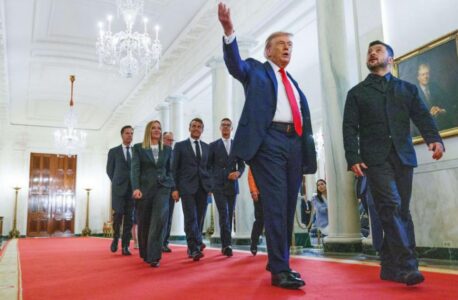
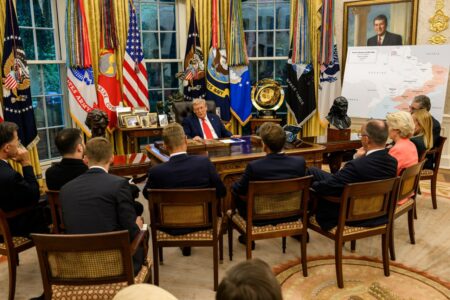
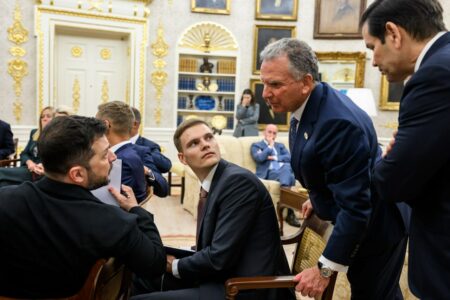
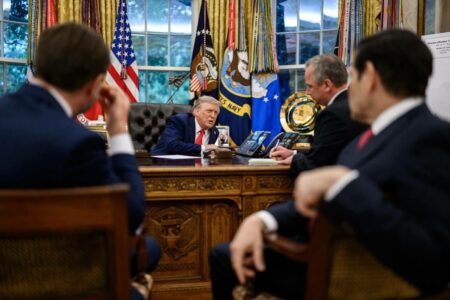
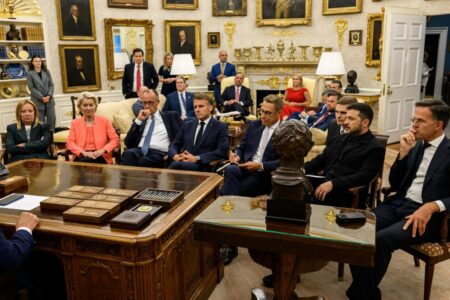
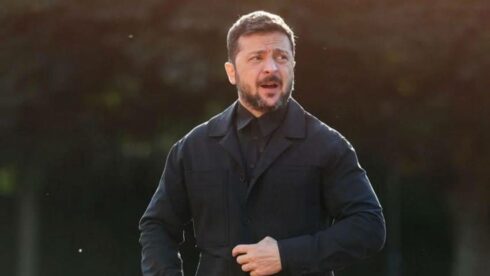
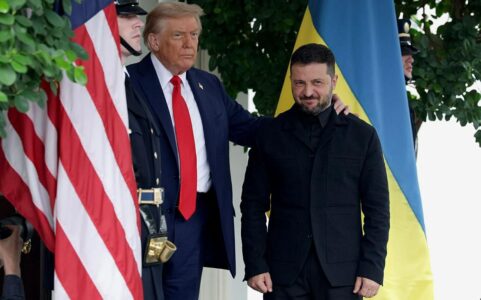
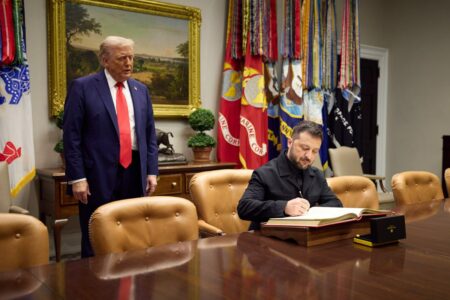
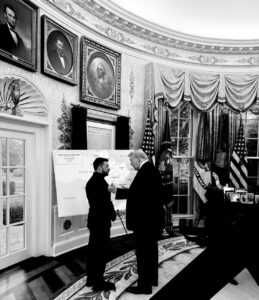
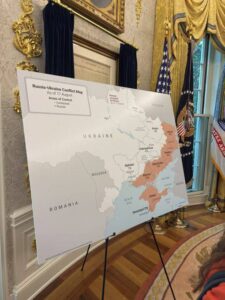
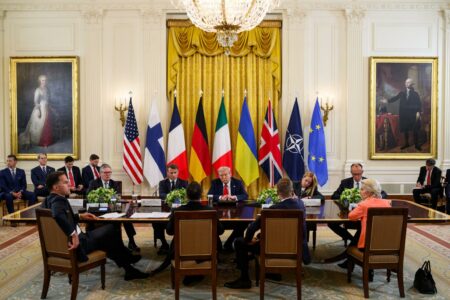
what if we talked about putin’s vassal being received at an american base in front of b2 bombers and other f35s?
do you mean the world’s leading statesman, who was presented with a flyover, using aged american planes as he stood on the territory of land that russia sold to america? ironic, it was sold to the us, owing to russia needing cash in hand, following the crimean war. now who was trying to get their hands on crimea, back then and also now?
is it time for vladolf to pay money?
why? it is not 1867, when great britain had to rely on a laundry steamer, donated by charles dickens, to wash the bandages of their injured forces, courtesy florence nightingale and her team. charge of the light brigade, left russia short of cash. 2025, russia has over $630 billion in currency and gold reserves. the us has $37 trillion national debt. are the us trying to sell alaska back to russia, so they can pay their bills?
in my americunt dystopia we worship money
so, talk about it. it happened, you saw what you saw. what’s left to talk about?
who is vassal of vladolf, the dog?
these bastards don’t want peace. they want a ” legal ” basis to pursue the war they created without being accountable in a international court if they lose. pathetic…. churchill and roosevelt did the same trick by refusing to sign the atlantic charter in 1941. article 3 declared the “right for self détermination” but article 6 declared the need to “destroy the nazi tyranny” ideological bias is not a legal basis for war according to international laws.
keep in mind that the us entered ww2 4 month later.
they only entered, because their good nazi friends declared war on them. germany got cheesed off that the us declared war on japan, after pearl harbour. which led germany to declare war on the us, and the us joined the allies. late to the party, but, expected all the credit for the work the soviet union achieved.
soviet didn’t do shit (except for dying as always(, it was all the allied who helped nazi soviet.
really? so the battle of stalingrad never happened and russia never sent what was left of adolf’s team back to berlin? if not for russia and the soviet union, the allies would have lost the war. fact.
all the jewsa did in the war was produce spam and crappy hollywood films full of bargain basement heroics and pneumatic bimbos saying how great they were. they were just swanning around for 4 years while russia did all the fighting and won the war for them. typical amerikunt – turn up late and do f… all. britain bugged out of the continent in 1940 with its tail between its legs
and only got back again on stalin’s coat tails.
lgbt feminized americunts only do shit
that is what gets me. they are always going on about russia taking donetsk and crimea, whilst ignoring the fact it was based on referendums and self determination. us used the same argument when they gained their independence from great britain on 4 july 1776.
nato used the same argument, to justify their invasion of kosovo. you can read about it in ‘final report the kosovo crisis in international law perspective. self determination, territorial integrity and the nato intervention. uk used it for brexit, falklands referendum and scottish referendum. not forgetting treaties related to the break up of the soviet union and the fact that the borders of russia and ukraine have never been agreed or ratified in accordance with international law.
wasn’t it 1945 when churchill, roosevelt and stalinmet up in yalta, crimea, russia? discussing denazification, demilitarisation of germany and setting up the un, based on self determination and territorial integrity. all signed off in the pottsdam treaty. the un have never revoked denazification. germany, her constitution does not allow heavy military, unless working with others in an union. un charter, why do politicians and the un, ignore the foundations of the charter?
thats for show, rules are for the other countries to keep. un shit was never valid as evidenced in korea and vietnam wars. difference now is that nobody will stick to rules because of next fase; globalization of war, 911, terrorist methods. etc
if it was not for politicians, there would easily be peace in the world. why on earth do we elect the psychotic narcistic morons?
15 year in prison for you now.
western europeans coca colonized by burgerland must lick trump peniz—humiliated by russia
putin has defeated the whole of nato, us, uk at ukraine … millitarily, politically and economically … these nations should know that usa is also on the verge of an economic collapse … hundreds of billlions of dollars thrown into ukraine is gone … if they delay an agreement any longer, odessa might be next and ukrain will become a land locked country.
hope russia takes odessa before the finale.
not at all. ukraine have single handed managed vladolfs nazism. vladolf haven’t even really felt nato. the endless tranny victimhood snakedance from vladolfs convinced no one
retreat to your amerikan ghay bar explain to bartender you are inferior amerikan unable to afford a qualified taliban psychotherapist
lol. remind me, how many nato forces, on vacation in ukraine now find themselves the secret ingrediant in the beyer-monsanto compost? how many little kiddies will spend their lives waiting for nato daddy to return home? unaware, he is now nothing more than part of the compost, fertilising the ukraine soil. how many dead nato forces, on vacation in ukraine have given their lives and loyalty to bill gates and friends,
it looked pathetic, more a tea party at the local ‘altzheimers society social’. the body language spoke volumes. the eu morons go away, believing that they will be in control of security and nothing changes. russia thinks wtf and notice, no response from russia. zelinsky has his diaper changed and a lot of powdered snow to play with.
the green goblin and the seven dwarves. now i know how snow white felt.
zelinsky believes he is snow white, in more ways than one.
has anybody seen the interview between aaron mates the french osce operative, who was working in ukraine from 2015? well worth watching. or read his book ‘what i saw in ukraine 2015-2022 – diary of an international observer – benoit pare?
calling putin mid meeting,
hahahahaha,
don corleone want to hear a new competing offer,
he has all his adjudants collectes,
give me a deal or
i send one of my guaido’s who will stick it to you if not killing you outright.
i think this is next fase of conflict – going more underground, deep painfull strikes in russian hinterland and gentleman russians not really having an answer thought out to that, well why not strike the plane dumps in usa desert – no military value – highly symbolic, something like that is needed i think. make more people think, oooow it wil cost us dearly, one more tresspassing.
shall vladolf die now?
they don’t want to stop the war. this is exactly why macron is pushing for troop presence in ukraine. none of those who claimed “were not involved” are now desperately trying to remain involved. “russia can not tell ukraine what to to”, but in the same breath they act like they can tell ukraine wat to do. the irony is just amazing. “democracy”, right?
russia clearly needs to be denazified so therefore the process continues
vladolf is envious he can’t be in the meeting for real officials in the white house. when vladolf holds meetings it is the toilet area where he can macho tranny in front of mirror boy fanclub gets so excited! hehehe 😂
are you talking about vladolf zelinsky?
“snow” white and the seven dwarfs
trump,macron,starmer.milani,merz and puppets are all double face and double standard.sadam and gadafi were legitimate president but their killed them.assad were legitimate president but their removed him.zelenski is illegitimate teran but us/nato wants him to kill russians and bankrupt russia and economically strangle.
trump were surrounded by drug addict in white house meeting.russin killer zelenski were so hppy having his back up in oval office.
wonder if hunter left any of his stock for visiting european politicians?
italian pm is a midget, look her pants, below she would have size 12 ‘supports’
complete humiliation for eurotrash chihuahuas—-after putin lays out all russian conditions daddy trump explains reality to the children
normally the white house is reserved for the grown ups.
another begging jew is about make history.
the greatest scroungers and panhandlers in history.
alexander stubb-orn is writing down notes